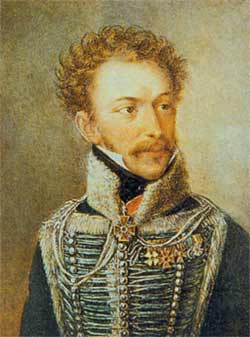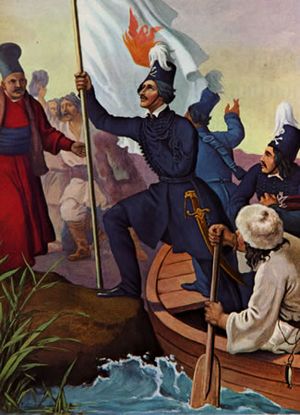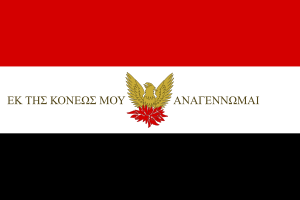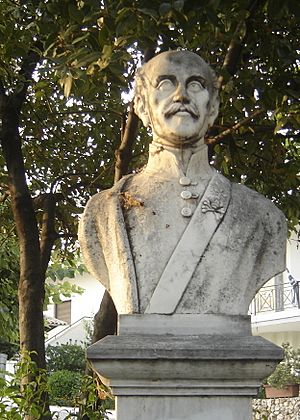Alexander Ypsilantis facts for kids
Quick facts for kids
Alexandros Ypsilantis
|
|
|---|---|

Ypsilantis in Sacred Band's attire
National Historical Museum of Greece. |
|
| Native name | |
| Born | 12 December 1792 Constantinople, Ottoman Empire (now Istanbul, Turkey) |
| Died | 31 January 1828 (aged 35) Vienna, Austrian Empire |
| Buried |
Taxiarches Church, Pedion tou Areos
|
| Allegiance | |
| Service/ |
|
| Years of service | 1805–1821 |
| Rank | Major General (Imperial Russian Army) |
| Unit | Grodno Hussar Regiment |
| Commands held | Commander of the 1st Brigade of Hussars (1st Hussar Division) Leader of the Filiki Etaireia Leader of the Sacred Band |
| Battles/wars | Napoleonic Wars
|
| Relations | Alexandros Ypsilantis (grandfather) Konstantinos Ypsilantis (father) Demetrios Ypsilantis (brother) |
| Other work | Aide-de-camp of Tsar Alexander I |
| Signature | |
Alexandros Ypsilantis (Greek: Αλέξανδρος Υψηλάντης, Romanian: Alexandru Ipsilanti, Russian: Александр Константинович Ипсиланти; 12 December 1792 – 31 January 1828) was a Greek nationalist and an important leader. He came from a well-known Greek family and was a prince in areas like modern-day Romania. He was also a high-ranking officer in the Imperial Russian Army during the Napoleonic Wars. Ypsilantis led the Filiki Etaireia, a secret group that helped start the Greek War of Independence against the Ottoman Empire.
Contents
Early Life and Family
Alexandros Ypsilantis was born on December 12, 1792, in Constantinople. This city was then the capital of the Ottoman Empire. His family, the Ypsilantis family, originally came from the Pontic Greek people of Trabzon.
He was the oldest of five brothers. His father, Constantine Ypsilantis, and grandfather, Alexander, were very educated. They both held important roles in the Ottoman government. They served as dragomans (interpreters and officials) and as hospodars (rulers) of the Danubian Principalities, which are now parts of Romania and Moldova. His mother, Elisabeta Văcărescu, was from the Văcărescu family.
Serving in the Russian Army
In 1805, when the Russo-Turkish War began, Alexandros's family moved to Imperial Russia. He received an excellent education and learned several languages. These included Russian, French, German, and Romanian.
At 15, he was introduced to the Russian royal court. Empress Maria Feodorovna became his supporter. In 1808, he joined the prestigious Chevalier Guard Regiment as a cornet. He quickly moved up the ranks.
During the French invasion of Russia, he fought in major battles. These included the battles of Klyastitsy and Polotsk. In 1813, he fought in the Battle of Bautzen. Later, in the Battle of Dresden, he was badly injured. A shell tore off his right arm.
Even with his injury, he was promoted to full colonel. He attended the Congress of Vienna, a big meeting of European leaders. There, he gained the support of Tsar Alexander I. The Tsar made him his aide-de-camp (a personal assistant). By late 1817, at just 25 years old, he became a major general. He commanded a Brigade of Hussars.
Planning the Greek Revolution
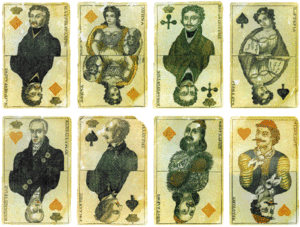
In 1820, the secret society Filiki Eteria needed a new leader. Count Ioannis Kapodistrias, the Russian foreign minister, turned down the role. So, the position was offered to Ypsilantis. He accepted and became the leader of the group.
After taking charge, Ypsilantis helped create a plan for the Greek War of Independence. This plan was updated in May 1820 in Bucharest. Rebel leaders from mainland Greece also took part in these discussions.
The main goals of the plan were:
- To help Serbs and Montenegrins start their own revolts at the same time.
- To cause a rebellion in Wallachia (part of modern-day Romania). This would involve rebels from Serbian lands.
- To create trouble in Constantinople using secret agents. The plan also aimed to burn the Ottoman fleet in the city's port.
- To begin the revolution in Greece itself, specifically in the Peloponnese, after Ypsilantis arrived there.
On October 8, 1820, Ypsilantis announced that he would soon start a revolt. He praised ancient Greece in his message. He said Greeks did not need outside help and could defeat the Ottomans alone. He also suggested that Russia would support them.
Campaign in Moldavia and Wallachia
- Further information: Wallachian uprising (1821)
News about the Filiki Eteria reached the Ottoman authorities. Because of this, Ypsilantis quickly started the revolt in Wallachia. He joined the fight himself. Starting the revolution in the Danubian Principalities had an advantage. These areas were self-governing under both Russia and the Ottoman Empire. They did not have Ottoman soldiers stationed there. Local leaders also had small armed groups for protection.
Legally, the Ottomans needed Russia's permission to send troops into Wallachia or Moldavia. If they sent forces without permission, Russia might declare war. The Prince of Moldavia, Michael Soutsos, was a Greek who secretly belonged to the Filiki Eteria. However, he also secretly told the Ottoman government about the planned invasion.
On February 22, 1821, Ypsilantis crossed the Prut river into the Principalities. He was with other Greek officers who served Russia. Two days later, in Iaşi, he announced that he had "the support of a great power" (meaning Russia).
Ypsilantis hoped this revolt would lead to Russia stepping in. He thought that if the Ottomans invaded to stop the rebellion, the Orthodox Russians would help their fellow Orthodox people. His hope was partly right. The Greek rebellion later led to the Russo-Turkish War of 1828. In that war, Russian troops reached the edge of Constantinople. They forced the Sultan to recognize the new Greek state's independence.
However, in 1821, Tsar Alexander was still part of the Holy Alliance. This group aimed to stop revolutions. So, the Tsar quickly distanced himself from Ypsilantis. Count Capodistria criticized Ypsilantis for misusing the Tsar's trust. He took away Ypsilantis's military rank and ordered him to stop fighting. Soon after, Capodistria himself had to leave his job.
These actions encouraged the Ottomans. They began gathering many troops to stop the uprising in Wallachia. Ypsilantis marched from Iaşi to Bucharest, trying to get more volunteers. Ypsilantis often lacked money. His men sometimes took supplies from the region without permission. In Galați, one of Ypsilantis's officers, Vasilios Karavias, was involved in violent acts against local Turkish merchants to raise money. In Iași, about 50 local Ottoman guards were killed after they surrendered.
During this time, the Sacred Band was formed. This group was made of young Greek volunteers from across Europe. Ypsilantis moved slowly. He did not enter Wallachia until early April. By then, Tudor Vladimirescu had taken control of Bucharest. Another problem arose when the Patriarch Grigorios spoke out against Ypsilantis. He called Ypsilantis an enemy of the Orthodox faith. He told believers to stay loyal to the Sultan.
In Bucharest, Ypsilantis realized he could not rely on the Wallachian Pandurs. Their leader, Tudor Vladimirescu, had started his own revolt. He was a nominal ally to the Eteria. However, he was trying to keep good relations with both Russia and the Ottomans. Ypsilantis and other Greek leaders expected support from the Romanians. They shared the same Christian Orthodox faith. But they did not fully understand the growing dislike of Greek influence in the Principalities. This was during the Phanariote era.
Vladimirescu felt that Russia's rejection of Ypsilantis meant he no longer had to support the Filiki Eteria. This led to conflict within Vladimirescu's group. In the end, Vladimirescu was killed by the pro-Greek side.
Meanwhile, the Ottomans crossed the Danube river with 30,000 soldiers. Ypsilantis retreated instead of moving towards Brăila. He organized his defense near Iaşi. A series of major battles followed. These led to the defeat of the Eteria's forces. The final defeat happened at Drăgăşani on June 7. Ypsilantis's army was tired after a long march. Karavias led the Sacred Band in a charge against the Ottomans. The Sacred Band was inexperienced and not well-trained. They did not form defensive squares. This made it easy for the Ottoman cavalry to defeat them.
After this defeat, Ypsilantis fled north. His army was very unhappy with him.
Seeking Safety
Ypsilantis, with his remaining followers, went to Râmnic. He spent several days trying to get permission from Austrian officials to cross the border. He worried that his defeated followers might hand him over to the Ottomans. He announced that Austria had declared war on Turkey. He even had a special church service held. Then, pretending to meet with the Austrian commander, he crossed the border.
However, the Holy Alliance had strict rules against supporting rebels in other countries. Francis I and Klemens Metternich enforced these rules. Austria refused to give Ypsilantis a safe place. He was kept in prison for seven years (from 1823 to 1827 in Terezín). He was finally released because Emperor Nicholas I of Russia insisted.
Later Life and Death
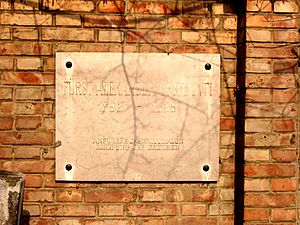
After his release, Ypsilantis moved to Vienna. He died there on January 29, 1828, in great poverty. His last wish was for his heart to be taken from his body and sent to Greece. Georgios Lassanis carried out this wish. His heart is now kept at the Amalieion in Athens.
His body was first buried in St. Marx cemetery. Later, on February 18, 1903, his family moved his remains. They were taken to the Ypsilanti-Sina estate in Austria. His final move happened in August 1964. He was finally laid to rest at the Taxiarches Church in Pedion tou Areos, Athens, Greece. This was 136 years after his death.
Ypsilanti Township, Michigan, in the United States, is named after him. The city of Ypsilanti, located within the township, was named after his brother Demetrius.
Images for kids
See Also
 In Spanish: Aléxandros Ipsilantis para niños
In Spanish: Aléxandros Ipsilantis para niños
- Alexander Ypsilantis (1725–1805) – grandfather
- Constantine Ypsilantis – father
- Demetrios Ypsilantis – brother


